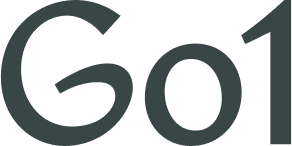
HR leaders face a rapidly shifting skills landscape driven by AI and emerging technologies. Yet many organisations are stuck with outdated, fragmented learning systems that work against, not with, learners.
Employees often juggle multiple platforms to complete training, managers spend time hunting for relevant content, and HR teams are bogged down in manual admin.
This fragmentation can make it nearly impossible to prove business value or scale learning strategically.
With tightening budgets, demonstrating ROI has never been more critical, but learning and development is often the first area targeted when cuts are needed.
“If you’re using six different tools, the CEO will ask, ‘why six?’ and cut them,” says Chris Eigeland, CEO of e-learning platform Go1. “Fragmentation opens the door to budget cuts because ROI becomes impossible to demonstrate.”
From compliance to digital upskilling, organisations of all sizes can struggle without a unified strategy.
Siloed purchasing compounds the problem as different leaders and managers within the same organisation may buy overlapping tools and services, leading to wasted L&D budgets on products that don’t work well together.
Navigating decentralised cultures
In many businesses, decentralised decision-making means managers naturally seek their own learning solutions.
“Without a strong, centralised learning culture, this leads to a messy patchwork of disconnected systems that undermine organisational goals,” explains Eigeland.
This scattered approach can carry heavy costs. Managing multiple vendors and systems adds administrative overhead.
Learners face confusing platforms that discourage engagement. Worse, measuring learning’s impact becomes a guessing game when outcomes are scattered across unconnected tools.
“As a result, you get a really poor return on investment (ROI),” Eigeland says. “The L&D team isn’t as effective as it could be as it spends so much time pulling systems and content together, learners are disengaged, and it doesn’t solve the capability and skills gap that the organisation set out to solve in the first place.”
People and processes
What can HR leaders do to break this cycle? The first step is adopting a learner-centric L&D strategy.
Executives need to get inside their employees’ learning experience, seeing where it’s clunky or confusing, and find ways to streamline navigation and increase content relevance to increase engagement.
It means designing customised learning journeys aligned to each role’s core skills and business priorities, ensuring employees master exactly what drives impact
Benchmarking against peer organisations also provides valuable insights. Learning from others’ successes can help HR leaders refine their approach, measure progress and stay competitive.
One standout example is Arrow Energy, which increased employee engagement by integrating Go1’s extensive content library with its existing learning management system.
This integration accelerated content discovery and freed up precious time for the L&D coordinator, allowing more focus on strategic tasks rather than administrative busywork.
Similarly, JCDecaux transformed its fragmented learning ecosystem into a unified, performance-driven culture with Go1’s platform.
Within a year, learner engagement soared from around 20% to 95%, while course completions increased by 60%. This consolidation also saved JCDecaux £75,000 annually by replacing costly, piecemeal training contracts.
The new system integrated seamlessly with existing tools, streamlining tracking and delivering UK-relevant content aligned with six core business objectives. This approach accelerated training rollout across global offices, supporting rapid growth with consistent standards.
Aligning L&D initiatives with organisational goals is essential. Learning should directly improve employee performance and deliver measurable business results — without this focus, even the best programs risk losing impact.
Embedding learning into the company’s culture and governance is just as critical. This means making learning part of everyday business, such as incorporating related KPIs into performance reviews, holding regular learning events and having leaders actively model a growth mindset.
“Culturally, this has to be led from the top,” says Eigeland. “Everyone has to authentically live a culture of improvement and learning, so leaders need to lead by example and show that they’re still learning too.”
But leadership endorsement alone isn’t enough. Organisations must create a ‘proactive space’ for learning by embedding it into daily workflows: scheduling dedicated weekly ‘learning hours,’ hosting interactive workshops, and integrating peer knowledge-sharing channels on platforms like Slack to truly support employee growth.
‘Building structure around learning means setting clear time for development, creating regular touchpoints like workshops, and fostering a culture where sharing knowledge daily is the norm — not an afterthought,’ explains Eigeland. ‘This deliberate framework brings learning to life and makes it part of how work gets done.’”
The benefits of a unified learning hub
Consolidating multiple complex systems into a single, intuitive, learner-focused platform is essential.
These systems can also make it more straightforward to evaluate meaningful metrics that move the needle in employee performance terms. – far beyond traditional but superficial measures like completion rates.
“You want your system to deliver insights you can’t get elsewhere,” Eigeland points out. “It should show how you benchmark against peers, enabling strategic conversations and clear articulation of ROI, which is nearly impossible in fragmented environments.”
Managing a tangle of systems and vendors can drain time and energy. Consolidating learning technology not only cuts this admin load but also gives HR leaders the freedom to focus on what really matters — driving strategic initiatives that push the organisation ahead.
“If you spend all your time searching for learning content and negotiating with multiple vendors, you can’t focus on more strategic work like identifying and addressing skills gaps,” Eigeland explains.
“Automating these time-consuming tasks is key to shifting from administrator to strategic partner.”
This shift offers HR leaders sharper visibility into workforce potential, strengthening their role in shaping the organisation’s talent strategy.
“Learning culture isn’t just about ticking boxes,” says Eigeland. “It’s the engine of continuous improvement that fuels an organisation’s ability to innovate, adapt, and thrive.”
‘The future of L&D is about measurable impact,’ says Eigeland. ‘HR leaders who master this will not only defend their budgets — they will unlock new growth opportunities for their organisations.’”
By consolidating tools into a single platform that delivers real-time insights on skills gaps and workforce potential, executives can shift from administrative gatekeepers to strategic architects of talent transformation.
For more information, please visit: www.go1.com/

HR leaders face a rapidly shifting skills landscape driven by AI and emerging technologies. Yet many organisations are stuck with outdated, fragmented learning systems that work against, not with, learners.
Employees often juggle multiple platforms to complete training, managers spend time hunting for relevant content, and HR teams are bogged down in manual admin.
This fragmentation can make it nearly impossible to prove business value or scale learning strategically.




